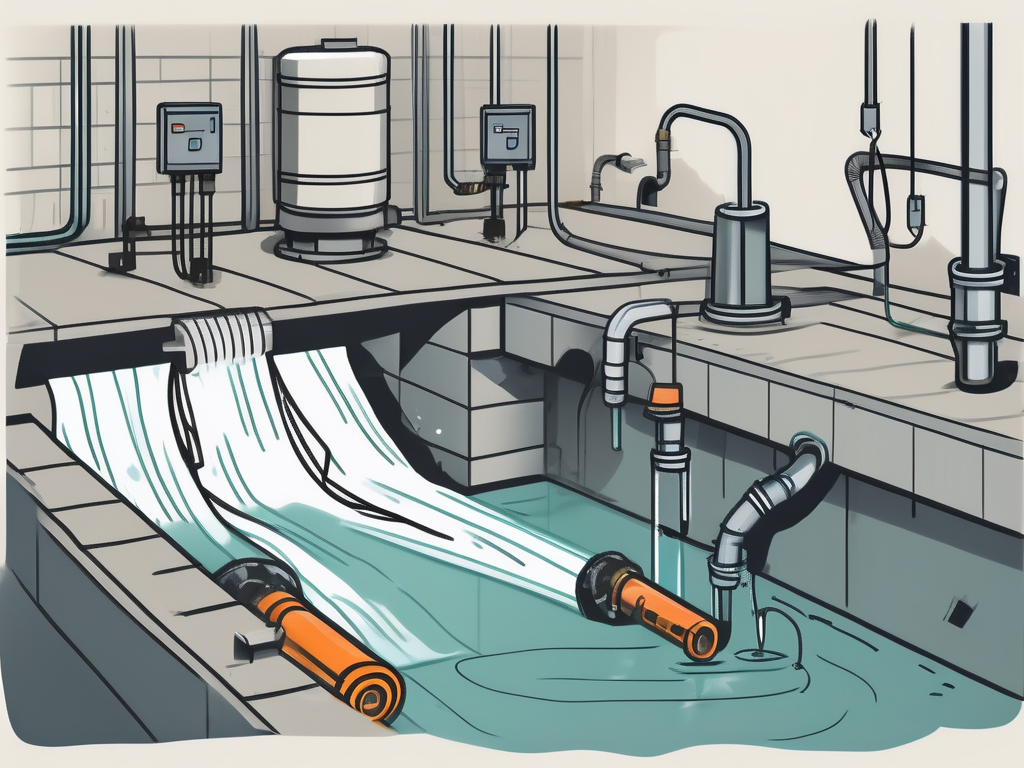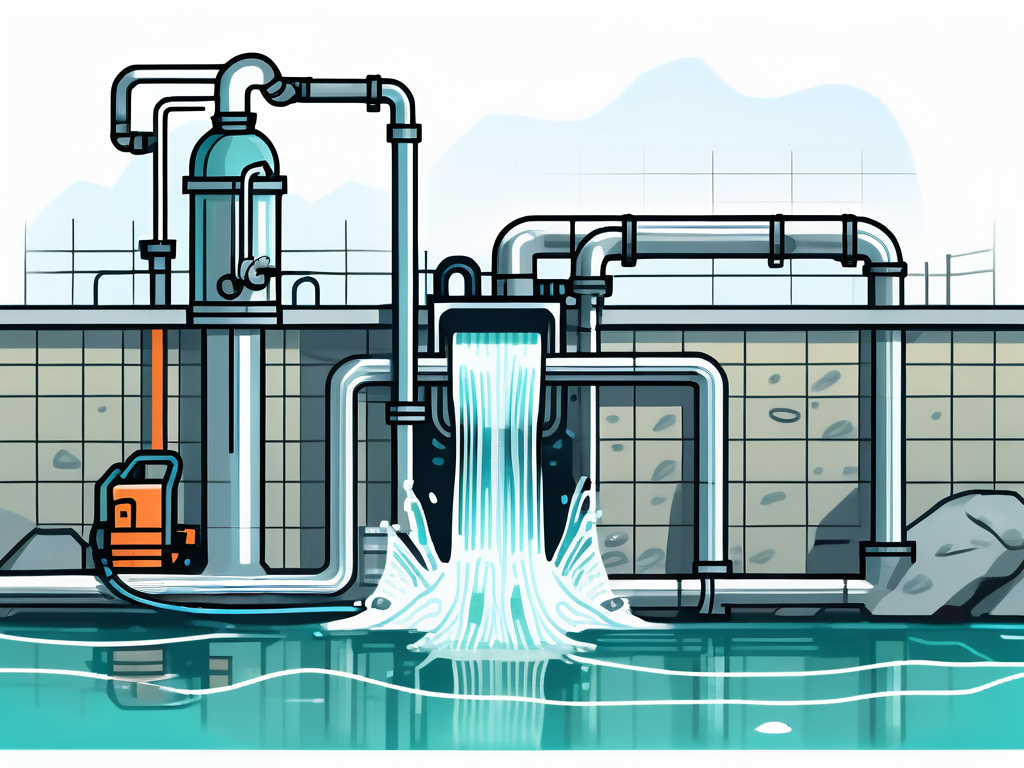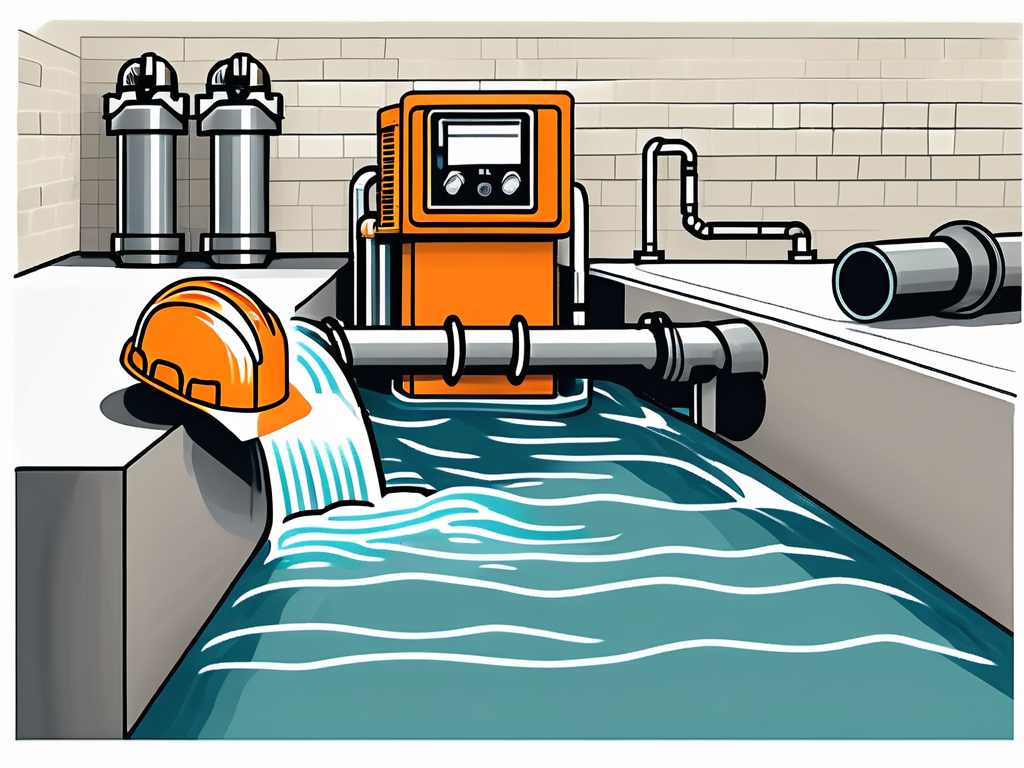
Expert Tips for Efficient Sewer Lift Station Repair and Maintenance
Maintaining sewer lift stations is critical in ensuring effective waste management systems function without interruptions. Adequate knowledge of the maintenance tasks, common problems, and safety measures will equip maintenance teams with the necessary expertise to tackle challenges efficiently. This article will provide expert tips and strategies for the optimal repair and maintenance of sewer lift stations.
Understanding the Importance of Sewer Lift Station Maintenance
Sewer lift stations play a vital role in transporting wastewater from lower to higher elevations, ensuring that sewage reaches treatment facilities without delays. Regular maintenance is essential to avoid costly repairs, prevent system failures, and maintain public health standards.
Maintenance not only extends the lifespan of a lift station but also enhances its operational efficiency. When properly maintained, these stations can effectively handle varying volumes of wastewater, protecting both infrastructure and the environment. This is particularly crucial in regions experiencing rapid urbanization, where the demand for effective waste management systems is constantly increasing. The proactive upkeep of lift stations can also lead to improved energy efficiency, as well-maintained pumps operate more effectively, consuming less power and reducing operational costs.
The Role of Sewer Lift Stations in Waste Management
Sewer lift stations act as essential components of municipal sewage systems, particularly in areas where gravity flow is insufficient. They elevate sewage so that it can flow downhill toward treatment plants, making them indispensable in urbanized areas with complex topographies. These stations are equipped with pumps that are designed to handle the specific characteristics of the wastewater they transport, including solids and debris, which can vary significantly from one location to another.
By elevating waste, these stations also help prevent sewage backups, minimizing the risk of environmental contamination and protecting public health. Their role supports the overall efficiency and reliability of municipal sewer systems. In addition, lift stations are often equipped with monitoring systems that provide real-time data on flow rates and pump performance, enabling municipalities to respond swiftly to any irregularities. This technology not only aids in immediate troubleshooting but also assists in long-term planning and infrastructure improvements.
The Consequences of Neglecting Sewer Lift Station Maintenance
Neglecting sewer lift station maintenance can lead to numerous issues, including blockages, pump failures, and sewage overflows. Such problems not only disrupt waste management but can also result in costly emergency repairs and potential legal liabilities if environmental standards are violated. The financial implications of these failures can be staggering, often leading to increased taxes or fees for residents to cover the costs of repairs and remediation efforts.
Furthermore, neglected maintenance can create hazardous working conditions for maintenance personnel and the public. Regular inspections and maintenance are therefore crucial in mitigating these risks and ensuring uninterrupted service. In addition to the immediate dangers, there are long-term consequences for the community, such as diminished property values and a tarnished public image. Communities that prioritize lift station maintenance not only safeguard public health but also foster a sense of trust and responsibility among residents, reinforcing the importance of sustainable waste management practices.
Key Components of a Sewer Lift Station
A comprehensive understanding of the key components of a sewer lift station is fundamental to effective maintenance and repair. Knowledge of each part's function aids in diagnosing issues and implementing appropriate solutions swiftly.
Identifying the Main Parts of a Sewer Lift Station
The primary components of a sewer lift station include pumps, valves, controls, electrical systems, and piping. Each of these parts works in conjunction to facilitate the efficient flow of wastewater.
- Pumps: The heart of any lift station, responsible for moving sewage through the system.
- Valves: These regulate the flow of wastewater and prevent backflow, essential for maintaining system efficiency.
- Controls: Automated systems that monitor and manage the operation of pumps and alarms for malfunctions.
- Electrical Systems: Power the station and facilitate operations; critical for the reliability of pumps and controls.
- Piping: Transports sewage between the lift station and treatment facilities.
Understanding the Function of Each Component
Knowing how each component functions is essential for effective troubleshooting. For instance, pumps must be capable of handling the anticipated volume and type of waste, and they must be serviced regularly to prevent failures.
Valves require regular checks to ensure constant flow and prevent backup situations. Controls are necessary for monitoring pump performance and activating alarms in case of failures, while electrical systems must be inspected for safety and reliability.
In addition to these primary components, it is also important to consider the role of the wet well, which serves as the collection point for sewage before it is pumped out. The design of the wet well can significantly impact the efficiency of the lift station, as it must be large enough to accommodate peak flow rates while also allowing for proper sedimentation and separation of solids. Regular maintenance of the wet well is crucial to prevent clogs and ensure optimal performance.
Moreover, the integration of advanced monitoring technologies, such as remote sensors and data analytics, is becoming increasingly common in modern sewer lift stations. These technologies can provide real-time data on flow rates, pump performance, and potential issues, allowing for proactive maintenance and reducing the likelihood of costly emergency repairs. Understanding these advancements can further enhance the efficiency and reliability of sewer lift stations, making them a vital aspect of urban infrastructure management.
Common Problems in Sewer Lift Stations
Understanding the common problems that can arise in sewer lift stations helps in proactive maintenance and quick response to issues when they occur. These facilities play a crucial role in wastewater management, ensuring that sewage is efficiently transported from lower to higher elevations, particularly in areas where gravity alone cannot facilitate flow. As such, the reliability of these systems is paramount for public health and environmental protection.
Identifying Signs of Sewer Lift Station Malfunctions
Some key signs of malfunction in sewer lift stations include unusual noises from pumps, irregular flow rates, and the presence of sewage odors. These indicators can signal underlying issues requiring immediate attention. For instance, a sudden increase in noise levels may indicate that a pump is struggling to operate effectively, possibly due to mechanical wear or a blockage in the system.
Other warning signs can include frequent alarm activation, inconsistent power supply, and visible leaks around the station, which necessitate further investigation to avoid major disruptions. Additionally, monitoring the vibration levels of the pumps can provide insights into their operational health; excessive vibration may suggest misalignment or imbalance, which could lead to premature failure if not addressed promptly. Regular monitoring and swift action can prevent small issues from escalating into costly repairs or service interruptions.
Addressing Frequent Issues in Sewer Lift Stations
Common issues such as pump failures, clogs, and electrical malfunctions need specialized attention. Regular maintenance inspections should focus on cleaning pumps, testing electrical systems, and monitoring for wear and tear on components. It is also essential to maintain an inventory of critical spare parts, as this can reduce downtime during repairs and ensure that the lift station remains operational even when unexpected issues arise.
Implementing preventive measures, like using filters to capture large debris and scheduling routine maintenance checks, can significantly reduce the likelihood of these problems occurring in the future. Furthermore, investing in advanced monitoring technologies, such as remote sensors and automated alert systems, can enhance the ability to detect anomalies early. These technologies can provide real-time data on flow rates, pump status, and overall system performance, enabling operators to make informed decisions and take action before minor issues escalate into major failures. By prioritizing both maintenance and technological upgrades, sewer lift stations can operate more efficiently and reliably, safeguarding public health and the environment.
Expert Strategies for Efficient Repair
To effectively repair sewer lift stations, employing expert strategies based on proven techniques can lead to better outcomes and minimized downtime.

Proven Techniques for Diagnosing Sewer Lift Station Problems
Employing systematic diagnostic procedures is crucial when addressing issues. Maintenance teams can utilize tools such as vibration analysis, thermal imaging, and visual inspections to identify problems in pumps, electrical systems, and other components.
Regular data logging of pump performance metrics can also help identify trends over time, which can be invaluable for predicting and preventing potential malfunctions. By analyzing historical data, teams can spot irregularities that may indicate wear and tear or impending failure, allowing for proactive maintenance interventions before a breakdown occurs.
Best Practices for Repairing Sewer Lift Station Components
Best practices for repairing components include adhering to the manufacturer's guidelines, using quality replacement parts, and ensuring that repairs are performed by trained personnel. Proper training ensures that maintenance teams are knowledgeable about the systems they are working on. Furthermore, incorporating hands-on training sessions and workshops can enhance the team's skill set, enabling them to tackle complex repairs with confidence.
Additionally, establishing a structured maintenance schedule can help streamline repair processes and keep stations operational with minimal disruption. This schedule should not only include routine inspections and maintenance tasks but also incorporate contingency plans for emergencies. By preparing for unexpected failures, teams can reduce response times and mitigate the impact on the overall sewer system, ensuring that public health and safety are maintained.
Preventive Maintenance for Sewer Lift Stations
Preventive maintenance is a cornerstone of effective sewer lift station management. It not only reduces downtime but also enhances the longevity and reliability of the equipment. By proactively addressing potential issues before they escalate into significant problems, facilities can ensure a smoother operation and maintain compliance with environmental regulations.
Routine Checks and Maintenance Tasks
Routine maintenance tasks should be performed regularly, including inspecting pumps and electrical systems, cleaning debris screens, and checking for leaks. Regular lubrication of moving parts will also help prevent mechanical failures. Additionally, it is crucial to monitor the condition of the wet well and check for signs of corrosion or buildup that could hinder performance. These inspections should be documented meticulously to track the condition of the equipment over time.
Documenting maintenance activities and findings in detail is essential for future reference and ensures accountability among maintenance teams. This documentation can also serve as a valuable resource during audits or inspections, demonstrating compliance with regulatory standards and showcasing the proactive measures taken to maintain the lift stations.
Long-Term Maintenance Strategies for Optimal Performance
Employing long-term strategies such as developing a comprehensive maintenance plan that includes scheduling, budgeting, and training further enhances the operational lifespan of sewer lift stations. Consider adopting modern monitoring technologies to facilitate real-time performance tracking. These technologies can provide alerts for any irregularities, allowing for immediate intervention and minimizing the risk of system failures.
Collaborating with industry experts can also provide valuable insights into emerging trends and best practices in maintenance, which can be integrated into existing strategies. Engaging in regular training sessions for maintenance personnel ensures that they are well-versed in the latest techniques and technologies, fostering a culture of continuous improvement. Furthermore, establishing a network with other facilities can facilitate knowledge sharing, enabling teams to learn from each other’s experiences and challenges, ultimately leading to enhanced operational efficiency.
Safety Measures During Repair and Maintenance
Safety is paramount when working on sewer lift stations. Implementing rigorous safety measures helps protect workers and the surrounding community during repair and maintenance operations.

Essential Safety Equipment for Sewer Lift Station Work
Appropriate safety equipment includes gloves, goggles, hard hats, and respiratory protection, especially in confined spaces. Using personal protective equipment (PPE) is critical to minimize exposure to hazardous materials and environments. Additionally, harnesses and fall protection gear are essential when working at heights, ensuring that workers are secured and reducing the risk of accidents. Regular inspections of this equipment are vital to ensure that it is in good condition and functioning properly, as worn or damaged gear can compromise safety.
Equipping teams with communication devices ensures that personnel can quickly alert others in case of emergencies, further enhancing safety on the job site. Two-way radios or mobile phones can facilitate instant communication, allowing for rapid responses to any incidents. Moreover, establishing a clear chain of command for emergencies can streamline decision-making processes, ensuring that everyone knows their role and responsibilities during a crisis.
Safety Protocols to Follow During Repair and Maintenance
Establishing clear safety protocols is crucial for efficient operation. Such protocols should dictate how to properly isolate electrical systems before repairs, conduct atmospheric tests before entering confined spaces, and follow lockout/tagout procedures to ensure machinery cannot be accidentally activated during maintenance. It is also important to have a designated safety officer on-site who can oversee these protocols and ensure that all team members are adhering to them, creating an additional layer of accountability.
Regularly training personnel on safety protocols not only fosters a culture of safety but also ensures compliance with industry regulations, protecting both workers and infrastructure. Training sessions should include hands-on practice and simulations of emergency scenarios, allowing workers to become familiar with potential hazards and the appropriate responses. This proactive approach to safety education can significantly reduce the likelihood of accidents and injuries on the job site.
By following these expert tips, maintenance teams can ensure the efficient operation and longevity of sewer lift stations, ultimately enhancing the overall functionality of waste management systems. Incorporating thorough planning, routine checks, and a focus on safety will lead to uninterrupted service and confidence in waste management practices. Furthermore, documenting all safety measures and incidents can help in improving protocols over time, creating a safer environment for all involved in the maintenance and repair of these critical infrastructures.
